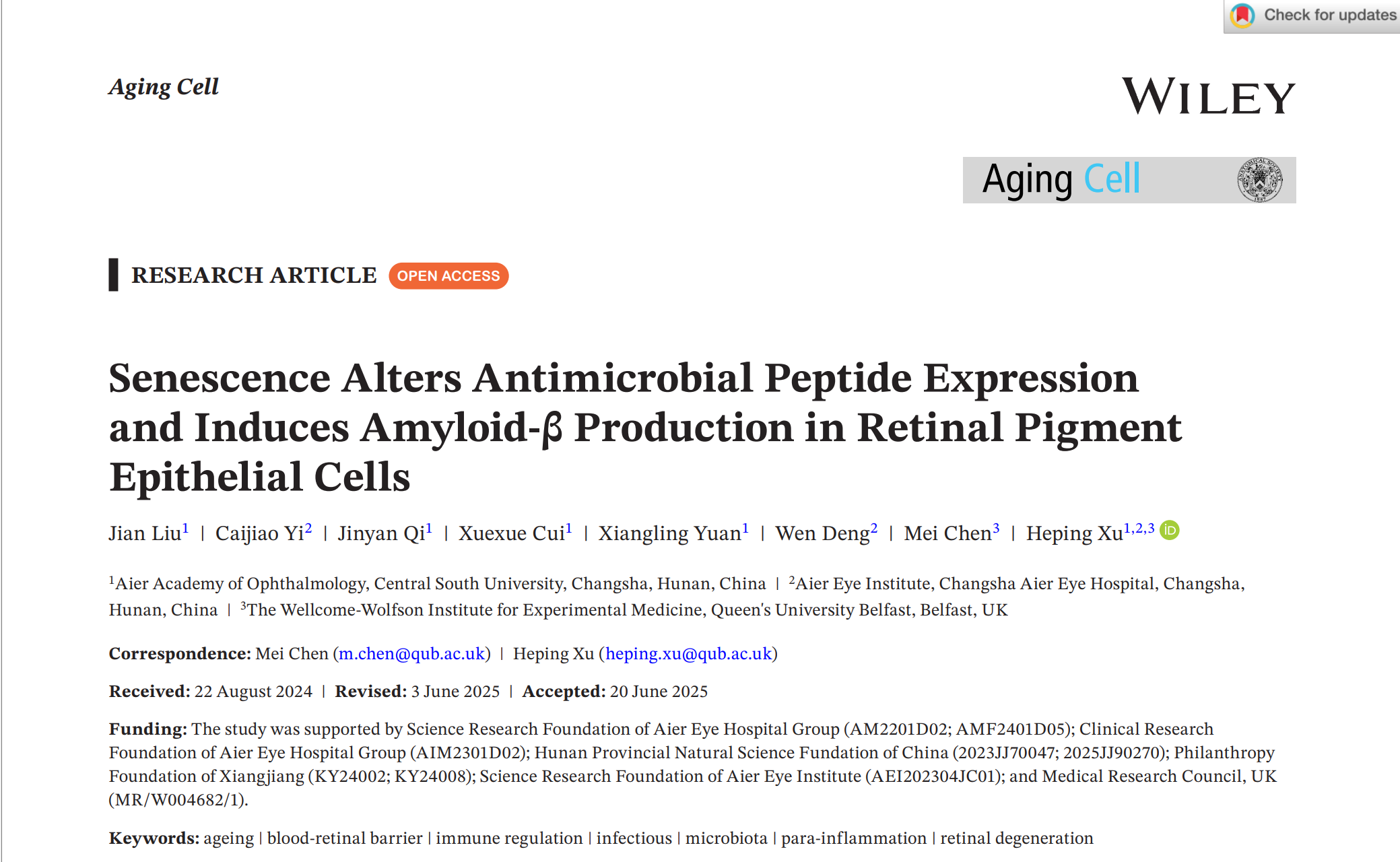- 首页
- 关于我们
概况介绍 研究方向 人才培养 委员会/committee
- 员工团队
特聘专家 主要领导 行政团队 技术团队 PI团队- 科研平台
中心实验室 实验动物中心 生物样本库- 最新资讯
- 首页
- 关于我们
概况介绍 研究方向 人才培养 委员会/committee
- 员工团队
特聘专家 主要领导 行政团队 技术团队 PI团队- 科研平台
中心实验室 实验动物中心 生物样本库- 最新资讯
Senescence Alters Antimicrobial Peptide Expression and Induces Amyloid-β Production in Retinal Pigment Epithelial Cells发布日期: 2025-05-06
Abstract
Age-related retinal degeneration, such as diabetic retinopathy and age-related macular degeneration, are major causes of blindness in modern society. Recent studies suggest that dysbiosis and intraocular translocation of bacteria from the blood circulation are critically involved in retinal degeneration. We hypothesise that the blood-retinal barrier (BRB) cells can protect the neuroretina from blood-borne pathogens by producing antimicrobial peptides (AMPs). The antimicrobial activity may decline during ageing, putting the retina at risk of low-degree chronic inflammation and degeneration. Here, we found that the retinal pigment epithelial (RPE) cells, which form the outer BRB, express a variety of AMPs/AMP precursors, including APP, RARRES2, FAM3A, HAMP, CAMP, GNLY, and PI3. Senescent RPE cells expressed lower levels of APP and RARRES2 mRNA, accompanied by increased intracellular retention of E. coli in a bactericidal assay. Silencing APP, not RARRES2, with shRNA reduced the antibacterial activity of RPE cells. Senescent RPE cells had lower levels of α-secretase and higher levels of β-secretase (BACE1) and γ-secretase (PS1), accompanied by reduced soluble APPα and increased amyloid beta (Aβ) production, particularly the Aβ42 isoform. Eyes from aged donors showed a higher Aβ accumulation within RPE cells. Our results suggest that while RPE cells possess antimicrobial activity, this ability declines with age and is impaired in senescent cells. The impaired antimicrobial activity and augmented Aβ deposition in senescent RPE cells may contribute to age-related retinal para-inflammation and neurodegeneration.
相关文章 - 员工团队
- 员工团队

